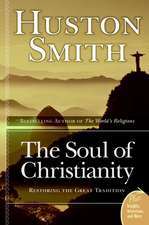The Wheel of Life: The Autobiography of a Western Buddhist: Shambhala Dragon Editions
Autor John Eaton Calthrope Blofeld Prefață de John Eaton Calthrope Blofeld Cuvânt înainte de Huston Smithen Limba Engleză Paperback – 31 oct 1988
Among John Blofeld's notable books are The Tantric Mysticism of Tibet and Bodhisattva of Compassion, both in Shambhala Dragon Editions, and The Book of Changes, a translation of the I Ching.
Preț: 173.19 lei
Nou
Puncte Express: 260
Preț estimativ în valută:
33.14€ • 34.60$ • 27.43£
33.14€ • 34.60$ • 27.43£
Carte disponibilă
Livrare economică 14-28 martie
Preluare comenzi: 021 569.72.76
Specificații
ISBN-13: 9780877730347
ISBN-10: 0877730342
Pagini: 316
Dimensiuni: 149 x 232 x 20 mm
Greutate: 0.48 kg
Editura: Shambhala Publications Inc
Seria Shambhala Dragon Editions
ISBN-10: 0877730342
Pagini: 316
Dimensiuni: 149 x 232 x 20 mm
Greutate: 0.48 kg
Editura: Shambhala Publications Inc
Seria Shambhala Dragon Editions
Notă biografică
John Blofeld (1913–1987) was a world-renowned scholar and writer who devoted his life to the study of Eastern religion, especially Taoism and Buddhism.
Textul de pe ultima copertă
"The Wheel of Life" is the spiritual autobiography of John Blofeld (1913-1987), a world-renowned British scholar and writer who devoted his life to the study of Eastern traditions, especially Buddhism and Taoism. With wit, honesty, and humility, Blofeld portrays his search for wisdom and his discovery of a genuine spiritual path. He describes in vivid detail his life in Peking and his travels in Tibet, Mongolia, China, India, and Burma: the worlds of remote mountain monasteries, the sacred inner chambers of sages and yogis, and the inspired lives of simple, ordinary people. The book is particularly valuable for its sensitive picture of a world that no longer exists. As Huston Smith remarks in his Foreword, "Blofeld encountered Chinese Buddhism and Taoism at a very special moment in history, the final moment before they came under Communist onslaught. To have his intimate glimpse into what they were like as still-living traditions is historically important."



































